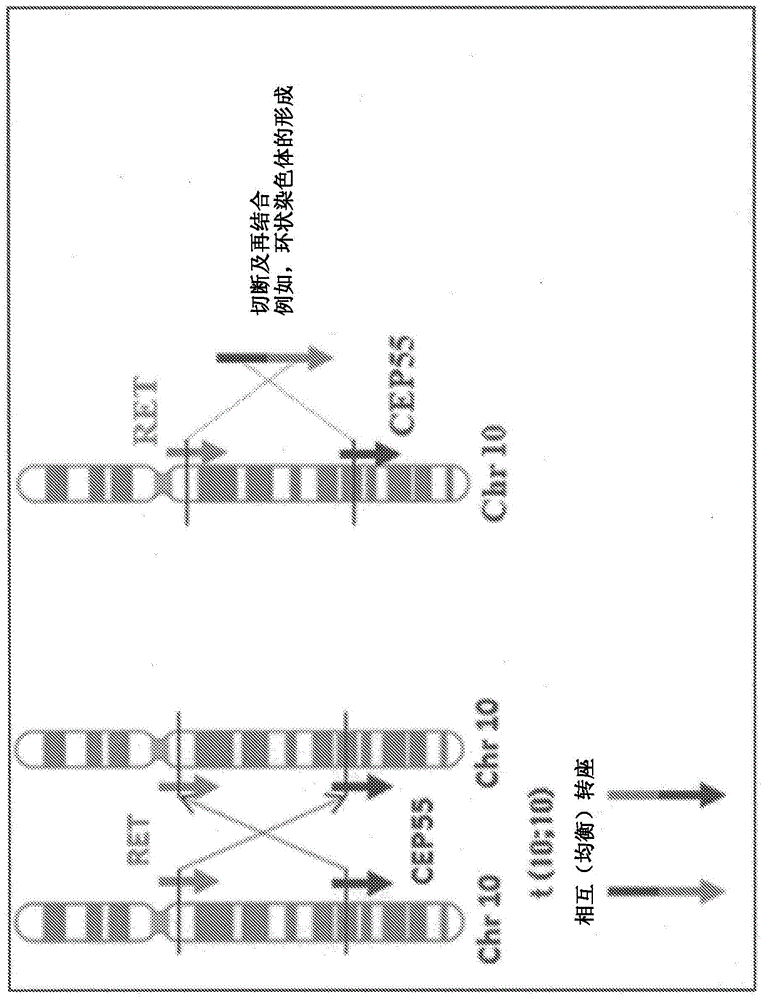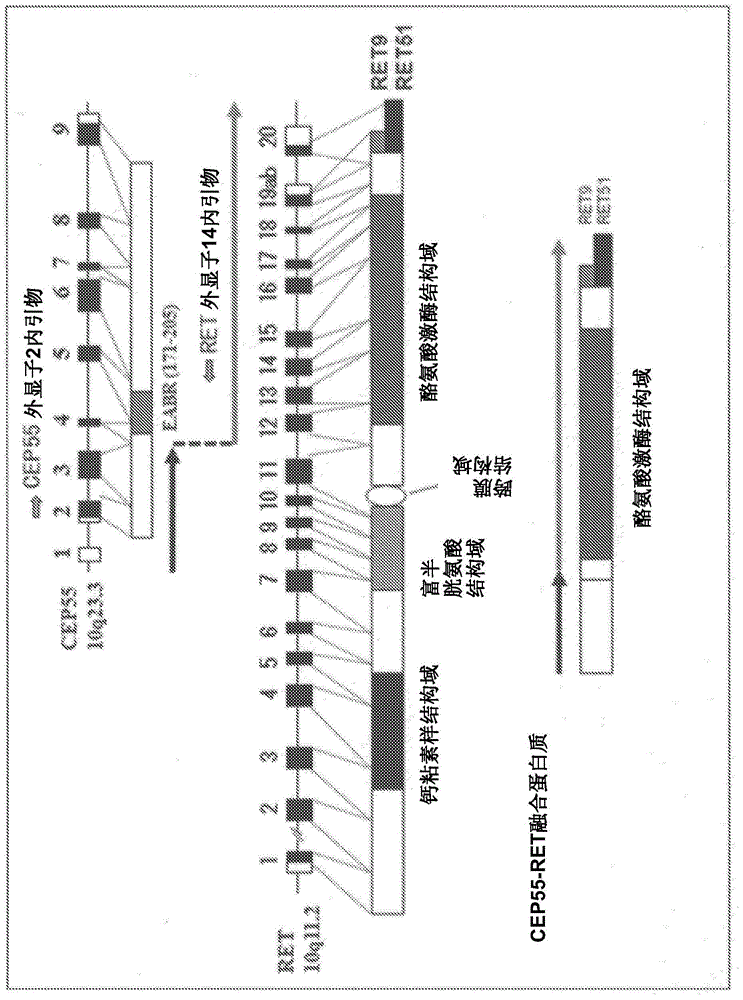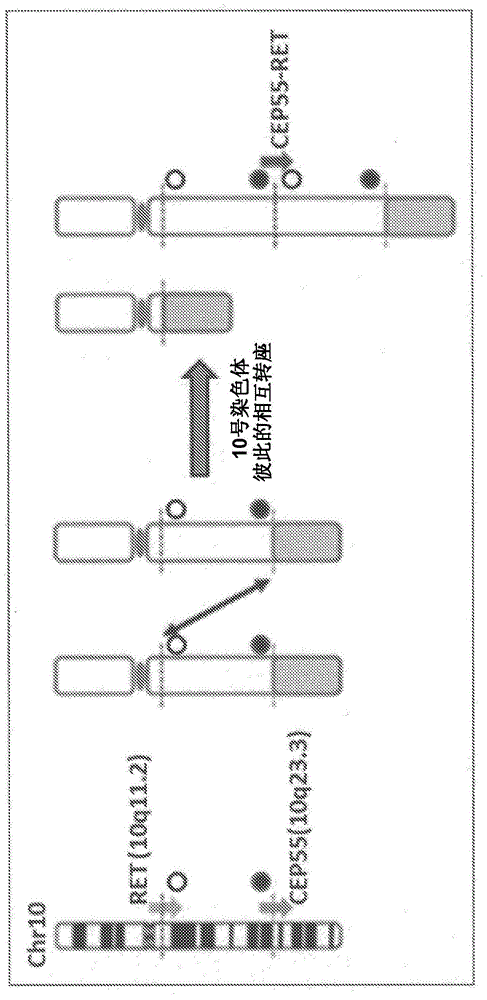Fusion gene of CEP55 gene and RET gene
A fusion point and base technology, applied in the field of fusion genes, can solve the problem of not being sufficient, achieve high-efficiency cancer treatment, and achieve the effect of cancer treatment
- Summary
- Abstract
- Description
- Claims
- Application Information
AI Technical Summary
Problems solved by technology
Method used
Image
Examples
Embodiment 1
[0152] [Identification of Novel Kinase Fusion Genes Using RNA Sequencing]
[0153] From the clinical samples of diffuse gastric cancer in 13 cases, on the basis of removing duplicate clones by PCR, 8.0×10 7 The above paired base sequence. Comparing these to the existing gene database, the results, such as figure 2 As shown, in one case, a fusion gene candidate encoding a CEP55 gene and a RET gene (a polynucleotide encoding a polypeptide fused to a CEP55 protein and a RET9 protein, a polynucleotide encoding a polypeptide fused to a CEP55 protein and a RET51 protein, hereinafter also referred to as referred to as "CEP55-RET fusion gene").
[0154] [Confirmation by RT-PCR and Sanger sequencing]
[0155] Next, verification of the fusion gene by RT-PCR and Sanger sequencing was performed using the same sample. As a result, by RT-PCR, case-specific amplification of the above-mentioned fusion gene was found, that is, expression of the above-mentioned fusion gene was found only i...
Embodiment 2
[0159] [Assessment of the function of the CEP55-RET fusion polypeptide and the effectiveness of RET tyrosine kinase inhibitors on cancer cells expressing the polypeptide]
[0160] It is considered that the above-mentioned gene fusion leads to the activation of the RET protein, and this activation also activates its downstream signals, resulting in the canceration of the cells. Therefore, it can be considered that RET tyrosine kinase inhibitors are effective in the treatment of patients with such activation. Therefore, for these observations, the CEP55-RET fusion gene was analyzed according to an appropriate conventional method as shown below.
[0161] First, the cDNA encoding the FLAG epitope tag (epitope tag) and the cDNA of the CEP55-RET fusion gene (polynucleotide encoding the fusion polypeptide of the CEP55 protein and the RET51 protein) obtained from the cancer tissue derived from the undifferentiated gastric cancer patient were combined. The 5' side was ligated in accor...
PUM
 Login to View More
Login to View More Abstract
Description
Claims
Application Information
 Login to View More
Login to View More - R&D
- Intellectual Property
- Life Sciences
- Materials
- Tech Scout
- Unparalleled Data Quality
- Higher Quality Content
- 60% Fewer Hallucinations
Browse by: Latest US Patents, China's latest patents, Technical Efficacy Thesaurus, Application Domain, Technology Topic, Popular Technical Reports.
© 2025 PatSnap. All rights reserved.Legal|Privacy policy|Modern Slavery Act Transparency Statement|Sitemap|About US| Contact US: help@patsnap.com



